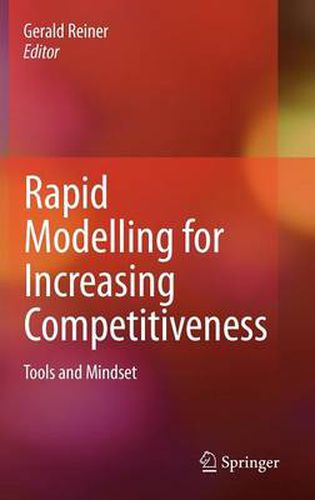Readings Newsletter
Become a Readings Member to make your shopping experience even easier.
Sign in or sign up for free!
You’re not far away from qualifying for FREE standard shipping within Australia
You’ve qualified for FREE standard shipping within Australia
The cart is loading…






This title is printed to order. This book may have been self-published. If so, we cannot guarantee the quality of the content. In the main most books will have gone through the editing process however some may not. We therefore suggest that you be aware of this before ordering this book. If in doubt check either the author or publisher’s details as we are unable to accept any returns unless they are faulty. Please contact us if you have any questions.
A Perspective on Two Decades of Rapid Modeling It is an honor for me to be asked to write a foreword to the Proceedings of the 1st Rapid Modeling Conference. In 1987, when I coined the term Rapid Modeling to denote queuing modeling of manufacturing systems, I never imagined that two decades later there would be an international conference devoted to this topic! I am delighted to see that there will be around 40 presentations at the conference by leading researchers from aroundthe world, and about half of these presentationsare represented by written papers published in this book. I congratulate the conference organizers and program committee on the success of their efforts to hold the ?rst ever conference on Rapid Modeling. Attendees at this conferencemight?nd it interesting to learn about the history of the term Rapid Modeling in the context it is used here. During the fall of 1986 I was invited to a meeting at the Headquarters of the Society of Manufacturing Engineers (SME) in Dearborn, Michigan. By that time I had successfully demonstrated s- eral industry applications of queuing network models at leading manufacturers in the USA. Although in principle the use of queuing networks to model manufact- ing systems was well known in the OR/MS community and many papers had been published,the actual use of suchmodelsby manufacturingprofessionalswas almost nonexistent.
$9.00 standard shipping within Australia
FREE standard shipping within Australia for orders over $100.00
Express & International shipping calculated at checkout
This title is printed to order. This book may have been self-published. If so, we cannot guarantee the quality of the content. In the main most books will have gone through the editing process however some may not. We therefore suggest that you be aware of this before ordering this book. If in doubt check either the author or publisher’s details as we are unable to accept any returns unless they are faulty. Please contact us if you have any questions.
A Perspective on Two Decades of Rapid Modeling It is an honor for me to be asked to write a foreword to the Proceedings of the 1st Rapid Modeling Conference. In 1987, when I coined the term Rapid Modeling to denote queuing modeling of manufacturing systems, I never imagined that two decades later there would be an international conference devoted to this topic! I am delighted to see that there will be around 40 presentations at the conference by leading researchers from aroundthe world, and about half of these presentationsare represented by written papers published in this book. I congratulate the conference organizers and program committee on the success of their efforts to hold the ?rst ever conference on Rapid Modeling. Attendees at this conferencemight?nd it interesting to learn about the history of the term Rapid Modeling in the context it is used here. During the fall of 1986 I was invited to a meeting at the Headquarters of the Society of Manufacturing Engineers (SME) in Dearborn, Michigan. By that time I had successfully demonstrated s- eral industry applications of queuing network models at leading manufacturers in the USA. Although in principle the use of queuing networks to model manufact- ing systems was well known in the OR/MS community and many papers had been published,the actual use of suchmodelsby manufacturingprofessionalswas almost nonexistent.